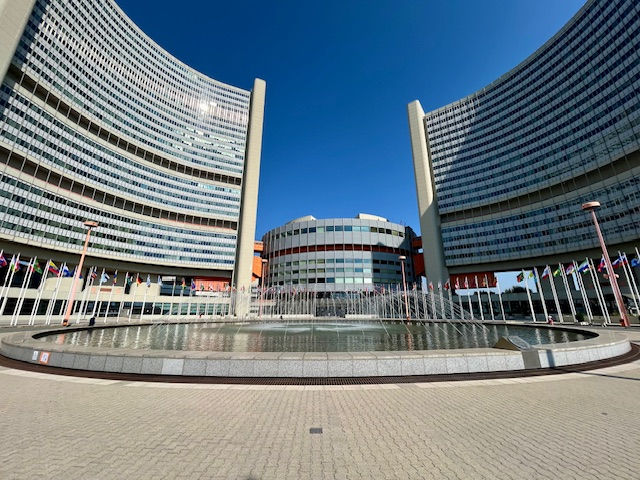A Shelter For The Fish
- Thomas Salas
- Aug 17, 2024
- 3 min read
Updated: Aug 22, 2024
08/16 - 08/17
Waking up early on Friday (08/16), I decided that I had enough time to stop by the Felzl Backery nearby before our third class began at 10:00. Grabbing a chocolate croissant, I munched on it in the classroom as I waited for others to arrive. As we were only in Eisenstadt just a few days before, Prof. Stuart first began talking about the reason why so many Jewish people settled in this city during the late seventeenth century. Emperor Leopold I's wife convinced him to expel the Jewish people from Vienna in 1670 because she believed that she wasn’t conceiving a baby because of Jewish magic.
Prof. Stuart explicated that while some rulers merely used religion as a social tool to corral the masses (looking at you, Putin!), the Habsburgs also truly believed in it. These dynastic rulers thought that their monarchical authority was vested in them by God and that divine favor is needed in order for their reign to continue. Moreover, the Habsburgs also understood that devotions are transactional. During the devastating plague in the 1670s, Leopold I begged God for his people's safety from the plague and, in exchange, he’d build a statue in his honor. He soon thereafter built the Plague Column, which is an example of Catholic Counter-Reformation spirituality.

The Plague Column commissioned by Emperor Leopold I.
The class was then educated about the crisis of the 1701 Spanish War of Succession that came following the death of the infertile (and inbred) Charles II of the Spanish Habsburgs. The French Bourbons are ultimately the victors and claim the throne of Spain, but the Austrian Habsburgs have them sign an international peace treaty guaranteeing that Spain may never be united with France in the future. Leopold I's son and the eventual emperor—Charles VI—similarly couldn’t produce a male heir, but he did have Maria Theresia. Though he did negotiate with his European counterparts to secure his daughter's succession rights, his death in 1740 marked the beginning of the War of Austrian Succession.
Prof. Stuart explained that it was shortly after the end of this crisis that Enlightenemnet principles were promulgated around Europe, particularly France. Maria Theresia tried to delay this in the Austrian lands, but her son—Joseph II—quickly implemented Enlightenment principles after his mother's death in 1780. His most notable reform was granting limited religious freedom of Jewish people and Protestants. As an enlightened despot, Joseph II wanted religion to have some utility, thus he shut down the monasteries he deemed were useless and abolished some of the countless Catholic holidays.

Our classroom.
Taking the 49 streetcar from the Kaiserstraße stop to the Siebensterngasse stop on Saturday (08/17) morning, myself and a couple other students then stopped at Kaffemik to grab a quick snack. Soon thereafter, we went to the Haus des Meeres aquarium in Esterhazy Park. The aquarium is inside an imposing defensive tower that was active during WWII. During a previous bus tour, we had passed by a pair of these defensive towers—known as flak towers—so Gretl had already informed us about the history of these six remaining buildings in Vienna. Built by the Nazis that had been occupying Austria since the 1938 Anschluss, these towers were used for aerial defensive purposes against the Allied powers. Since most adult men were deployed in active combat, those that manned the air weapons were often children. Moreover, these towers also had shelters designed to withstand Allied air raids. In Vienna, it was deemed to costly to demolish these buildings, thus the interiors of the towers have often been converted for other uses, such as the Haus des Meeres aquarium.

The Haus des Meeres aquarium in the Sixth District.
From jellyfish to hammerhead sharks, the Haus des Meeres aquarium has a diversity of aquatic life within its eleven-story flak tower. A surprise to me, the building also houses a number of non-aquatic animals as well. Komodo dragons, scorpions, and white-faced sakis are just a few of the many fascinating animals I saw while visiting this historic building. We ended the day by climbing up to the eleventh floor to see the 360° view of the surrounding Sixth District of Vienna.
Some of the animals in the Haus des Meeres.

The view from the eleventh floor of the Haus des Meeres.
German Words of the Day: Truthahn (Turkey) & Geschenk (Present)
Provided by: Transparent Language






